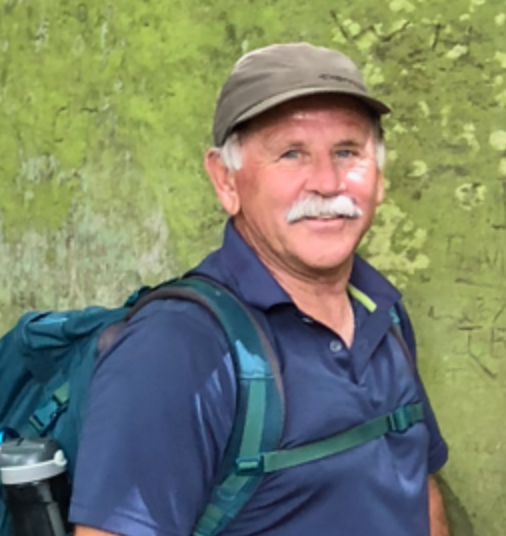Could telomeres be the answer to ageing and chronic disease? Dr Paul Bateman tells us more.
In the nucleus of each cell, our genes are stacked into DNA molecules tightly packed into thread-like structures called chromosomes surrounded by specific proteins that support its structure.
At the end of the chromosomes are sections of DNA called Telomeres.
Telomeres protect our genetic data, make it possible for our cells to divide, and hold the secrets to how we age and catch diseases.
Telomeres are similar to the plastic tips on shoelaces. They keep chromosome ends from fraying and sticking to each other that could destroy or scramble our genetic information. More recently, the telomere has become a significant marker of ageing.
With each division of the cell the telomere shortens and as time goes by they can become habitually shortened causing many age related diseases as well as the more common wrinkles and grey hair.
The shortening of the telomere is a reflection of the number of times the cell has divided. When they get too short and the cell can no longer divide, it becomes inactive, “old” or dies. This shortening process is associated with ageing, cancer and a higher risk of death. Telomeres are like a time bomb ready to go off at any time!
Cells can normally divide only about 50 to 70 times, with telomeres getting progressively shorter until the cells become old or dies.
Without telomeres the genes essential for life would get shorter each time a cell divides. Telomeres allow cells to divide without losing genes. Cell division is necessary for growing new skin, blood, bone, and other cells.
Telomerase is the enzyme that ignites many of these reactions and remains active in sperm and eggs, which are passed from one generation to the next.
If reproductive cells did not have telomerase to maintain the length of their telomeres, any organism with these cells would soon become extinct.
As a cell begins to become cancerous, it divides more often, and its telomeres become very short. If the telomere gets too short, the cell may die. Often times, these cells escape death by making more telomerase enzyme, which prevents the telomeres from getting even shorter.
Successful ageing requires an ability to balance damage with repair of cells. When the damage to the cell overcomes the repairing of the cell subsequent long-term degeneration will occur subjecting us to Alzheimer disease, cardiovascular disease, Type 2 diabetes and Sarcopenia.
Many cancers present with shortened telomeres, including pancreatic, bone, prostate, bladder, lung, kidney, and head and neck.
Geneticist Richard Cawthon from the University of Utah found shorter telomeres were associated with shorter lives. In a sample of people older than 60 years, those with shorter telomeres were three times more likely to die from heart disease and eight times more likely to die from infectious disease.
Without telomeres, chromosome ends could fuse together and corrupt the cell’s genetic blueprint possibly causing malfunctions or cell death. As broken DNA is dangerous, a cell will sense and repair the damaged chromosomes. Without telomeres, the ends of chromosomes would look like broken DNA. The cell would try to repair something that wasn’t broken forcing the cell from dividing and eventually dying.
Cawthon’s study found that people with longer telomeres lived an average of five years longer than those with shorter telomeres. He suggested that increasing the length of telomeres in people with shorter ones could increase the lifespan by approximately five years.
A major cause of ageing is “oxidative stress.”
Oxidative stress is the damage to DNA, proteins, and lipids (fats) caused by oxidants, which are highly reactive substances containing oxygen.
The free radicals that are produced in combination with the consumption of alcohol and cigarettes can result in inflammation and infection, all of which has an impact on shortening the telomere.
We know that if people who have a low fitness level, who are obese, are older or are suffering from a chronic disease undertake high intensity exercise have the potential for the unregulated production of free radicals (ROS) that can have serious side effects, particularly on the cell membrane.
Several studies have reported a positive association between physical activity and telomere length. Active individuals have longer telomeres in their immune cells compared to sedentary individuals, with differences in telomere length equating up to approximately 10 years difference in biological age.
Some studies have reported that moderately active individuals have longer telomeres compared to both sedentary and extremely active individuals.
One study reported that 50–70 year-old individuals in both the lowest < 990 kcal/wk-1 and highest energy expenditure > 3541 kcal/wk-1 had shorter telomeres than individuals in the middle group who expended between 991–2340 kcal/wk1, even when controlling for age, gender, and body weight.
Moderate intensity physical activity (3-6 METs) is more likely do not cause skeletal muscle damage, does not result in an excess ROS and inflammation and does not shorten telomeres. As a consequence moderate intensity activity would appear to at least maintain or more likely increase telomere length with age.
The available research data supports physical activity in combination with stress reduction and dietary modifications over a long period can slow cellular ageing and improve health as indicated by reduced telomere shortening.








